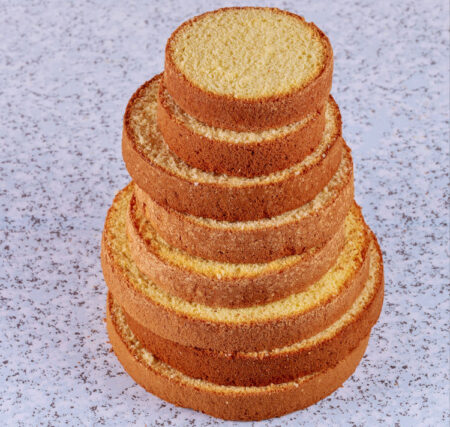I was only 22-years old, newly graduated with an education degree, and eager to make an impact on this world as a blissfully optimistic math and science teacher.
Remember those days?
I was feeling especially grateful to have landed a full-time teaching position in my hometown, and at a great school to boot. However, only weeks before the start of school, my principal informed me that she had been forced to make a difficult decision with teacher assignments and I was now going to be teaching both grade 12 Pre-Calculus classes.
I felt nervous and intimidated. That course was more than just a critical course toward graduation as it also had a standardized exam at the end of it. Exasperating matters, the school had been below the regional average on this exam for the past ten years running. And I heard there was pressure from everywhere to fix this pattern — students, parents, admin, and even at the highest levels in the district.
Having to teach a senior academic course in my first year of teaching already had me feeling like I was learning to swim in the deep end of the pool. Knowing this, my principal did her best to shelter me from the immense pressure she was facing. However, it still felt like sharks had been added to the pool for some extra motivation, as if I needed any.
Perhaps some of you can relate to the experience of feeling the considerable weight of a standardized exam looming at the end of your course, whether it’s the formidable Advanced Placement exam or some other state or provincial exam. Regardless of your personal views of standardized exams — whether you feel they are legitimate and needed or whether you detest, frankly, the very idea and their influence on how you spend your precious, limited time with your students — the reality is that the exam is still coming. And your students are hoping — some even needing — to do well on it. So, how can we help prepare our students for the AP Exam as well as possible?
The more we can reduce cognitive load, the easier cognition (i.e., learning) will be.
This framework is consistent with Cognitive Load Theory. If you’re unfamiliar with CLT, check out this article to see how it fits with the ideas below. But in short, CLT is based on the principle that students have a limited amount of cognitive space (i.e., working short-term memory) and instructional materials and strategies either promote or limit learning depending on their demand on working memory. Thus, the more we can reduce cognitive load, the easier cognition (i.e., learning) will be.
Before we jump in, I should also mention that I rather enjoy eating sweets. So, please forgive me if I use a baking analogy to help me form, shall we say, a robust framework.
The Overall Framework: Layering the Cake — Covering the Content in Multiple Passes

One approach to preparing students for the AP Exam is to do much of a unit’s AP Exam prep while doing the unit and then simply do old AP exams at the end of the course. The commonly recognized disadvantage, of course, is that the earlier units are done months before the AP Exam and thus some of the content and specialized skills, such as things to look out for in specific AP exam questions on a unit, are forgotten and must be re-learned again. This requires additional time. The less recognized disadvantage, however, is that this approach puts most of the cognitive load on the front end, requiring students to not only learn the essential course content itself, which is formidable, but then also learn how to apply that to demanding AP exam questions, which requires yet another level of cognition.
This is non-trivial. Let’s be honest, calculus can be hard to learn for many students! Besides the nature of the topics themselves, which require higher levels of abstraction, imagination, and attention to detail than students have ever needed before, calculus also assumes that students are masters at pre-calculus, which just isn’t the case for the average student. Any holes in their prior math learning will be mercilessly exposed when they attempt to learn calculus. So, students already have enough to worry about when trying to get a handle on the essentials of calculus, apart from the AP Exam.
Spread the Cognitive Load Throughout the Course.
A solution to this, which is the approach I’m advocating for here, is to spread the cognitive load throughout the course as much as possible. How can one do this? By baking the cake in layers. That is, consider doing the course in multiple passes.
I use five passes:
- First Pass: Focus on learning the essential concepts and skills and avoid worrying about doing things in a specific AP format or worrying too much about the more challenging questions for now. For example, on a recent free-response AP exam question, students were asked to get the area between two curves and use that as the base of a solid with cross-sections to calculate the volume of the solid, which is challenging enough. However, then they were asked to get the rate of change of the cross-sectional area as a vertical line travels at a certain rate from left to right along the base of that solid. To tackle that all at once, when first covering applications of integration, is asking for an incredible amount of cognitive load (working memory) after students have only learned what cross-sections are days earlier! Students will be well served by only having to learn the essential concepts and skills initially, so it can sink in deeply before they have to face the added sophistication and complexity later. This approach will not only reduce the cognitive load demand but will also boost their psychological confidence, which will pay hefty dividends later. Plus, if you wanted to pull a Jaime Escalante, you can even paint the AP exam questions as the “bad guys,” so students don’t interpret their difficulty in doing some challenging AP questions as their inability to do calculus. It’s the bad guys’ fault. By the end of the course — after the last pass — students will have the confidence and skill level to beat the bad guys, just not yet.
- Second Pass: At the end of each unit, I have the students do one or two Progress Checks from AP Classroom to pass over the content again at a higher level and to get familiar with AP-Exam-style questions. I warn them that they may not do not well on these yet and not to worry at all. Much more AP exam practice is coming. I also remind them that getting 70-75% on the AP exam usually amounts to a top score of 5, so they should keep that in mind when they are doing some of the difficult and challenging questions. Teachers should also keep this in mind with assessments that affect students’ grades. Although the majority of questions on my summative assessments mimic previously released AP Exam questions, I’m very intentional about the kinds of questions I present to students.
- Third Pass (occurs at approximately 4-6 weeks remaining in the course): After this, students go through the course again fairly quickly, with increased sophistication in each unit. It begins by reviewing a unit’s assessments to refresh their knowledge – and possibly as a cue to do some practice questions in troublesome areas if needed – and then they work on a substantial set of old AP exam-style questions which focus exclusively on that topic. They do this primarily through AP Classroom, an excellent resource, and in AP Exam study guides like Barron’s or Princeton Review if they have one (see the following article for more recommendations). The StudyForge Calculus course has some AP questions in each lesson as well.
- Fourth Pass: Students will now do their final preparation before attempting full practice exams by doing sets of Multiple Choice and Free Response questions which cover topics from anywhere in the course. Here they learn to jump from topic to topic, gauging what skill and competency is needed based solely on the information in the question, as well as solve problems that require a combination of topics and skills. Previously released AP Multiple Choice questions are ideal for this as well as each year’s released set of Free Response questions (the more recent the question the better). Again, AP Classroom and AP exam study guides can help too.
- Fifth Pass: Now it’s time to put it all together, where students will write two to four full AP exams. Here students will do practice exams under, ideally, the same conditions as the actual AP exam they will be facing shortly. This will help them get used to the parameters surrounding the AP Exam and get more comfortable with writing an exam in such an environment. AP Classroom has a few full practice exams and there are also released exams from previous years that are available. AP Exam study guides also have full practice AP exams. (Note: The following article will have more information on things like specific AP exam-taking tips, common AP exam student errors, recommendations for the exam day itself, etc.)
Hopefully, that gives a sense of how one can layer the course cake, so to speak, and help spread the cognitive load throughout the learning process.
Conclusion
I started my teaching career feeling nervous and intimidated, but it turned out, with the support of my colleagues and the hard work of my students, they were able to end up beating the regional average. With more time and experience, I continued to refine my approach, learning that with a solid recipe that’s rooted in how students learn and intentionally allows them the mental space to do so, success is possible, even on a difficult standardized exam.
So, to all the teachers with standardized exams out there, keep your chin up, keep working hard, and try to have fun.
Happy baking!
About the Author

Bruce Merz, M.A.
(Curriculum & Instruction), M.Sc.(Math)
Bruce is a passionate educator who has taught for over 25 years at both the secondary and post-secondary levels, in the classroom and online, and in the public and private/independent educational sectors, including educational work for the government. Bruce is the STEM Curriculum Specialist at StudyForge. He loves designing courses that create amazing learning experiences for students and help them achieve their potential. He also loves seeing how digital curriculum can help students in developing regions such as in the townships of South Africa, where he was able to see this firsthand, and is excited about what the future holds for education around the globe.





